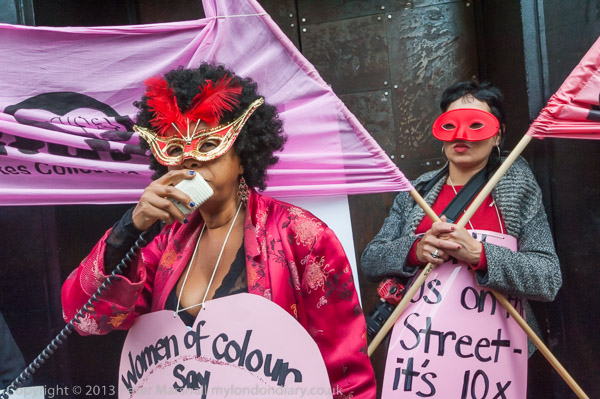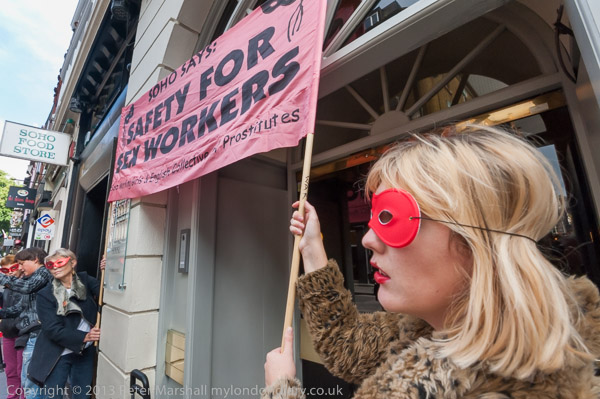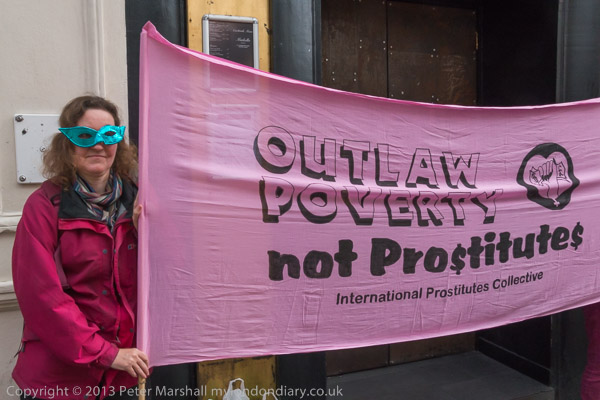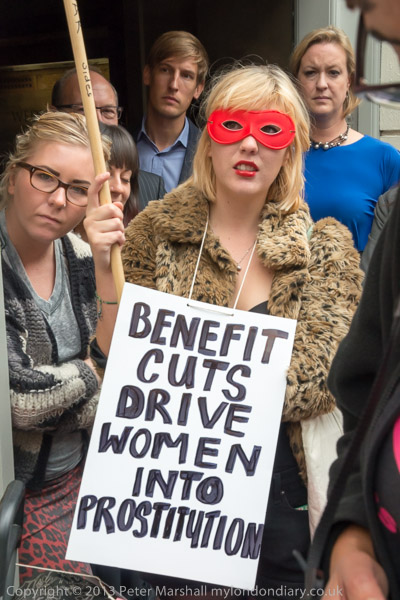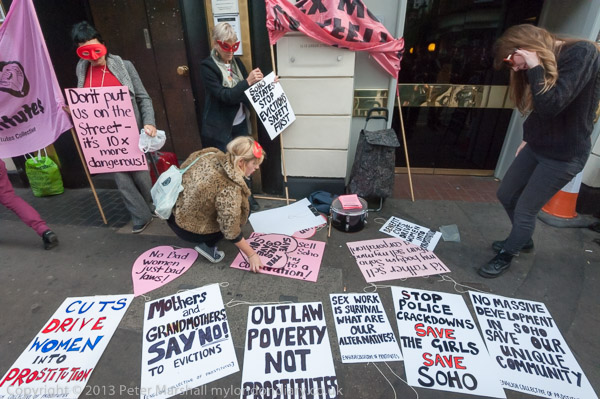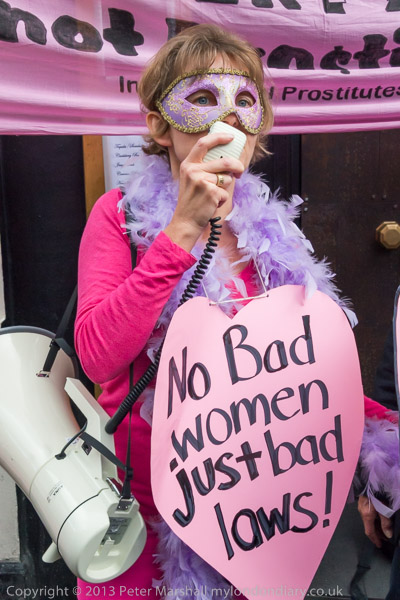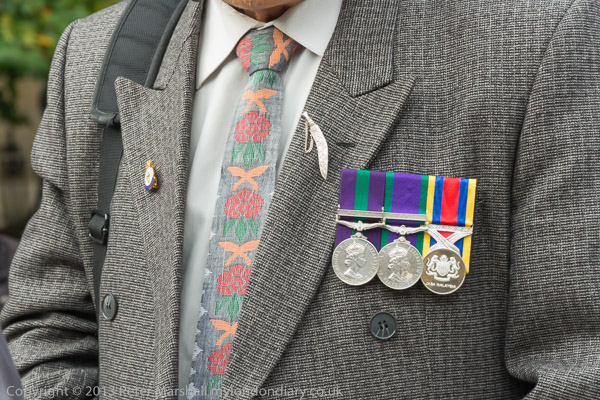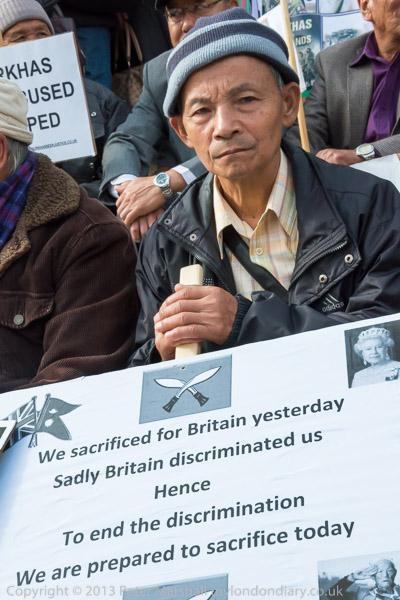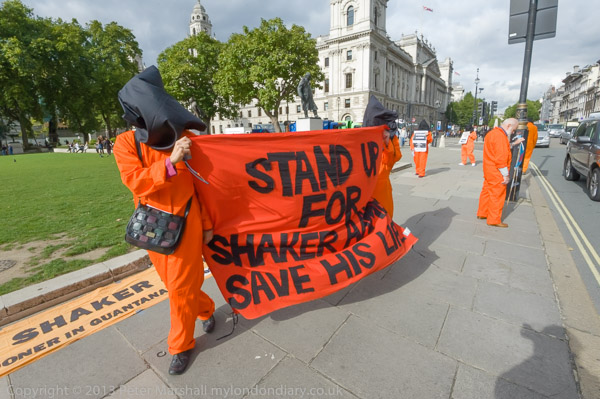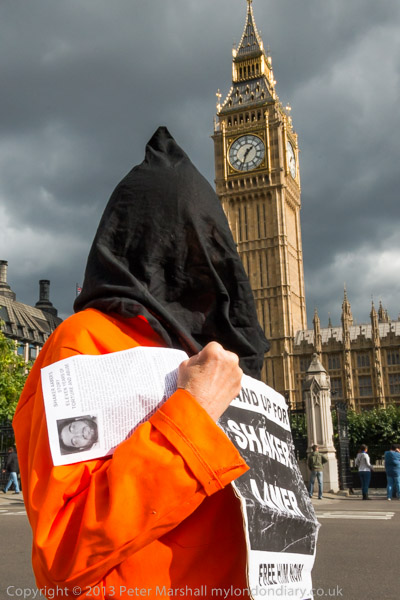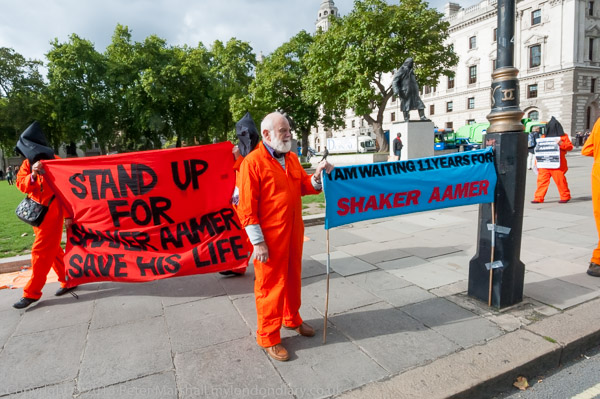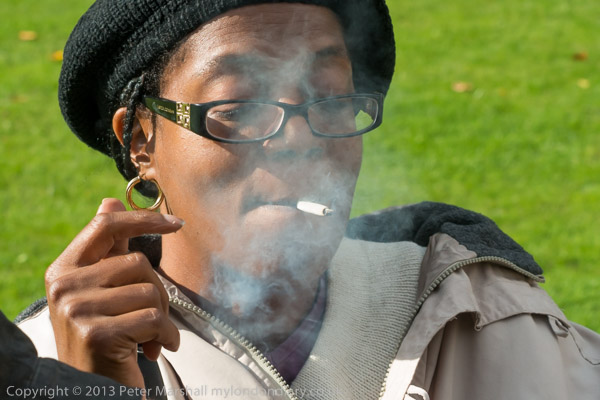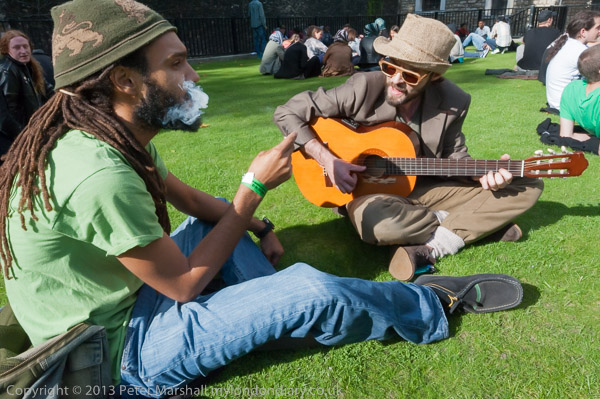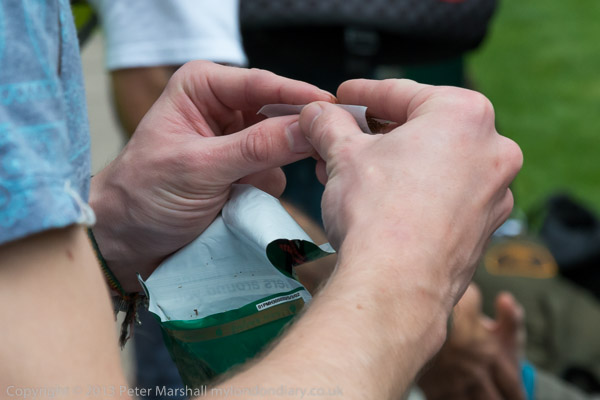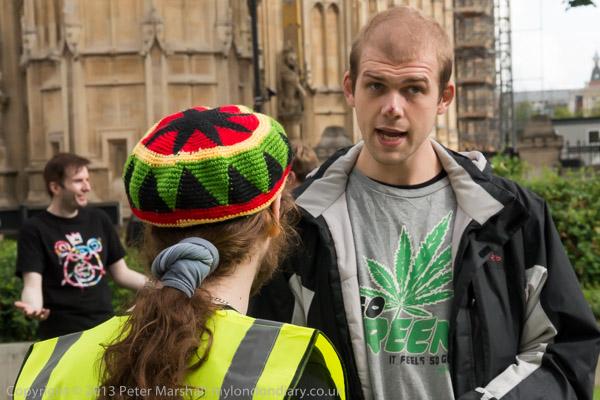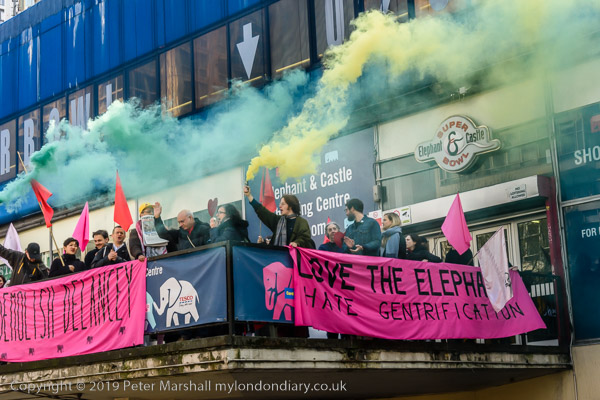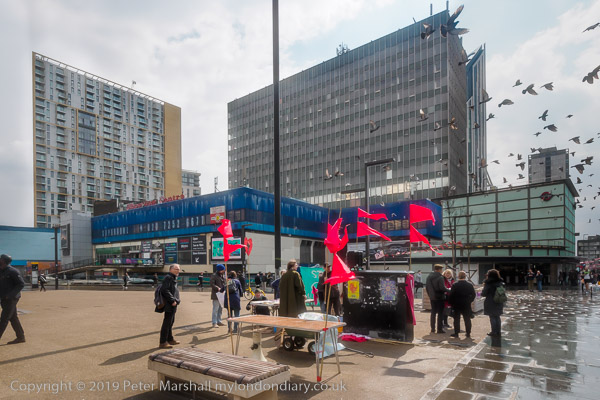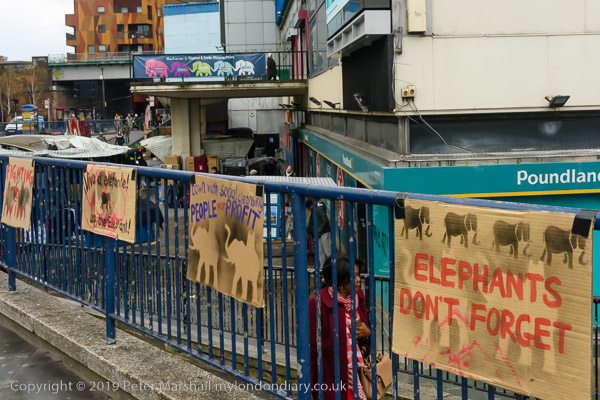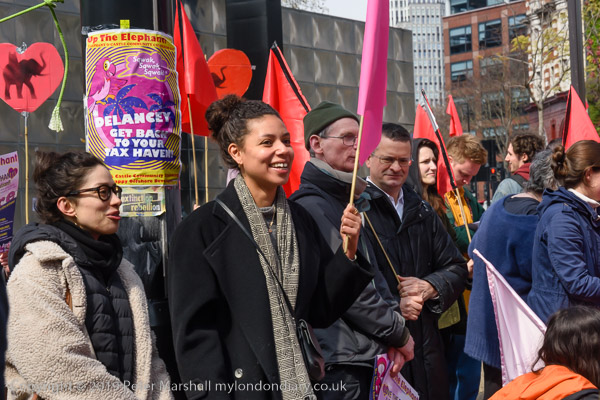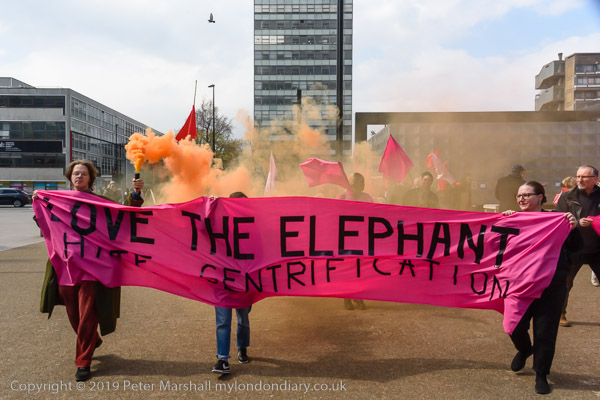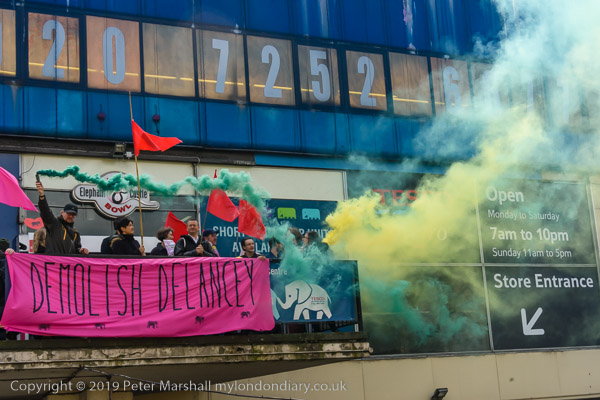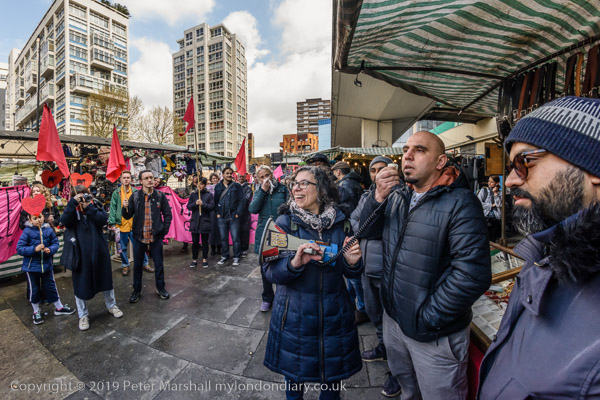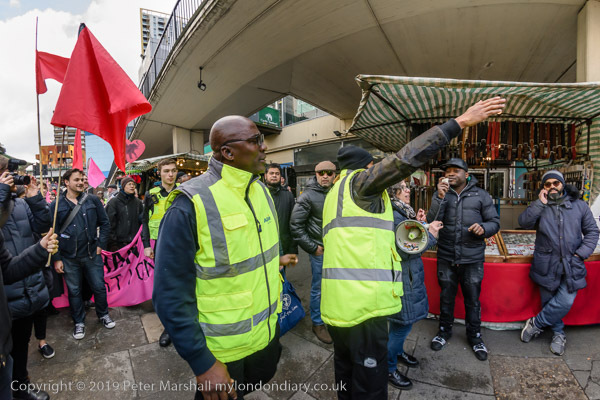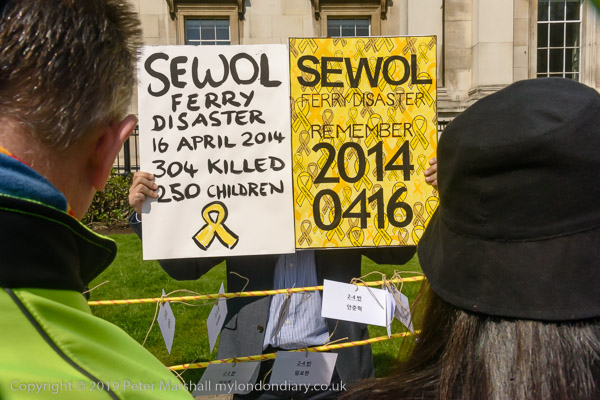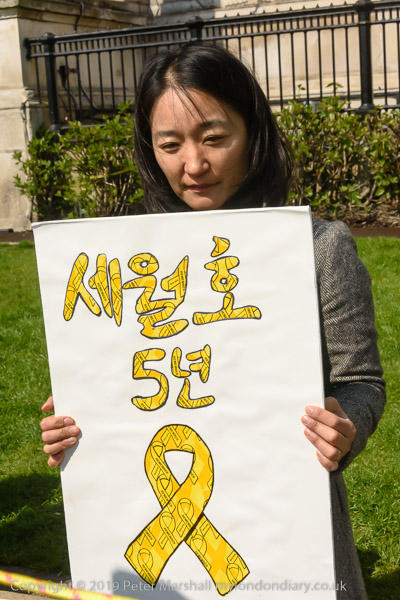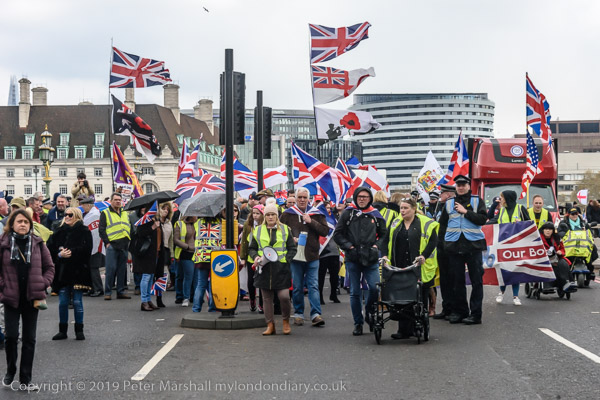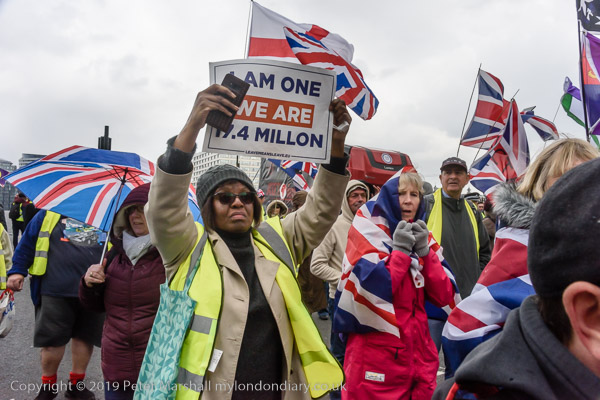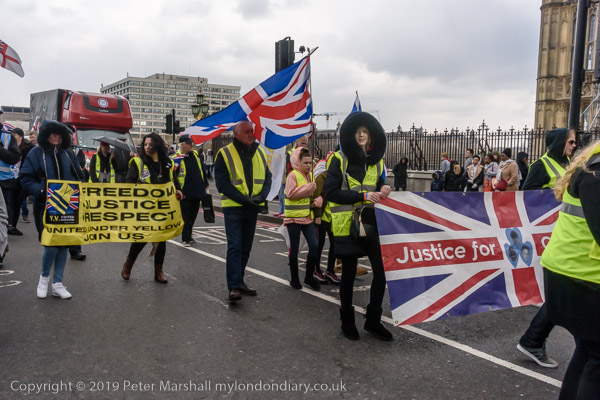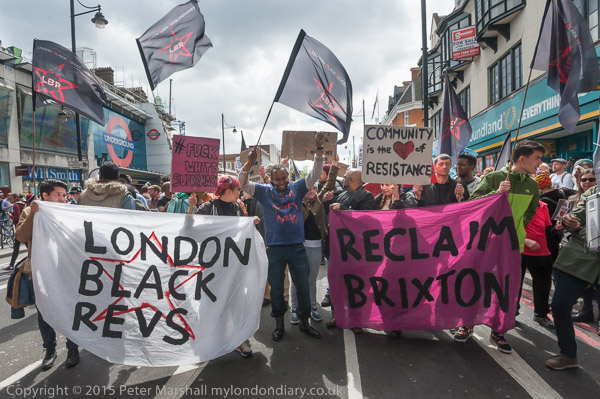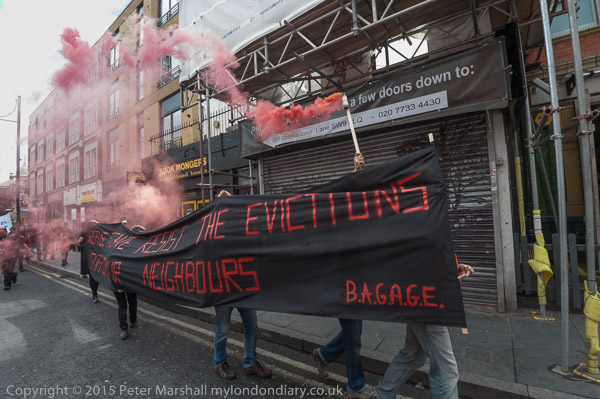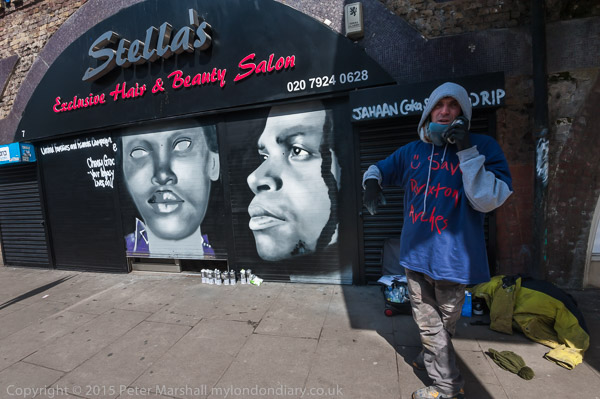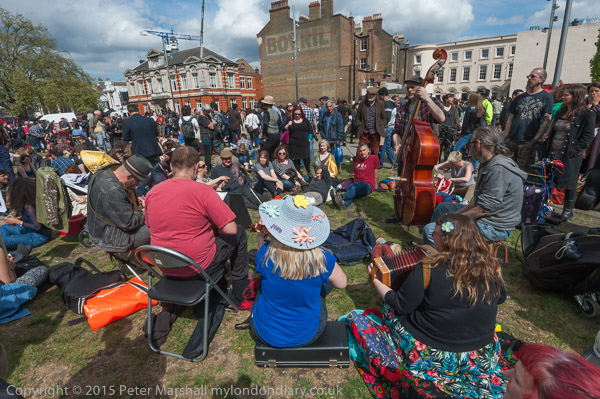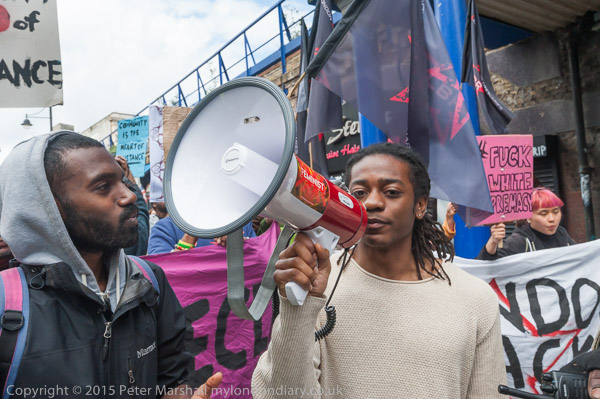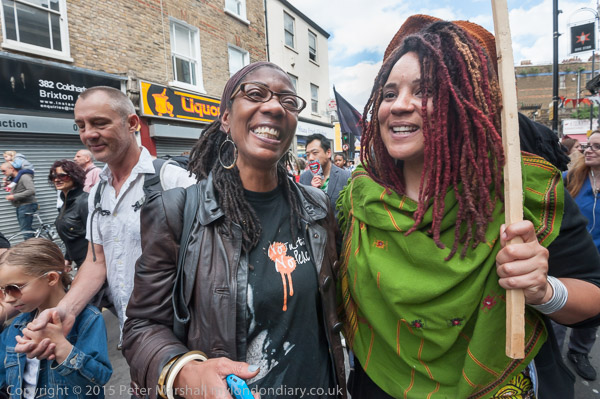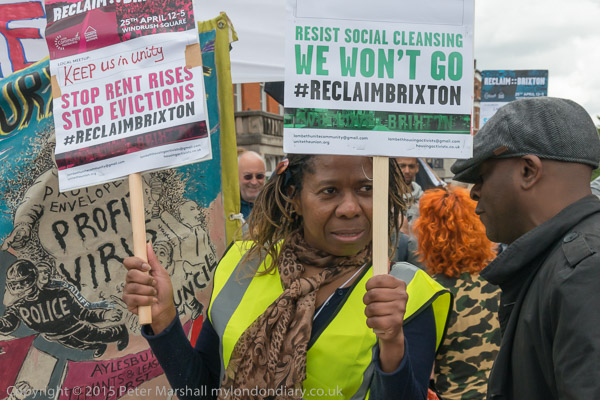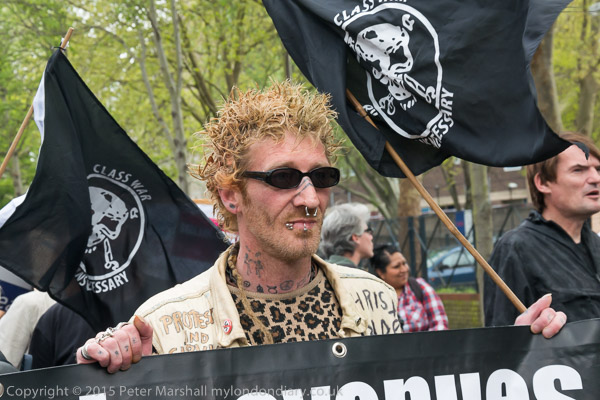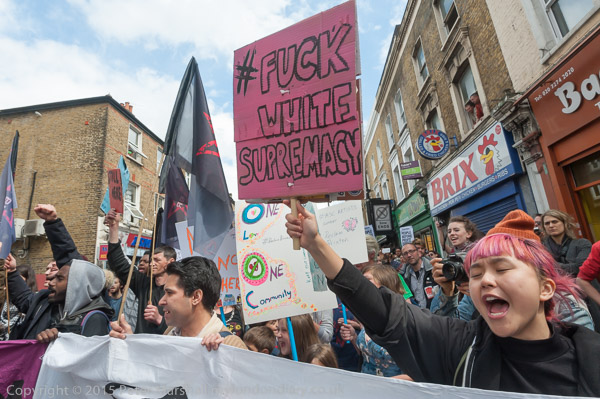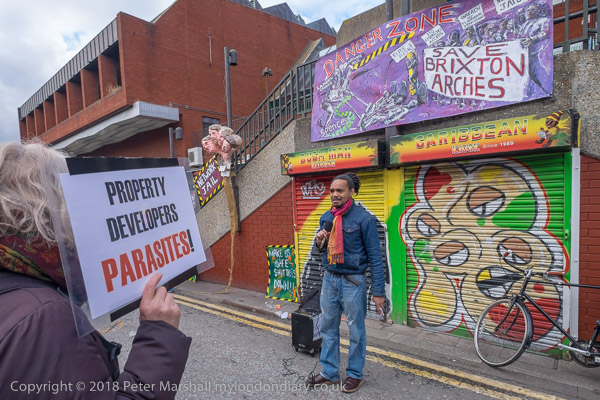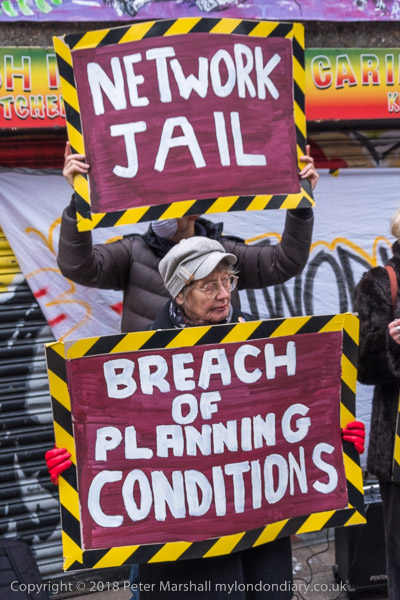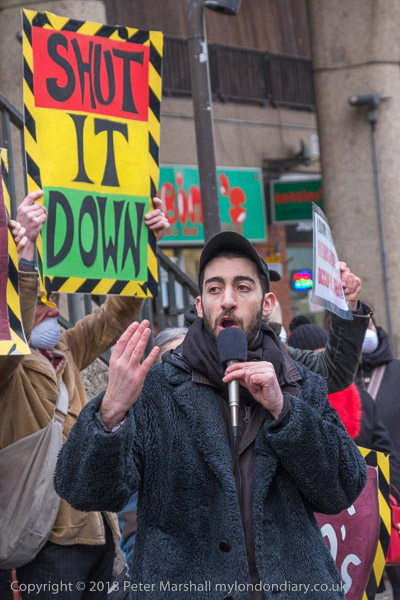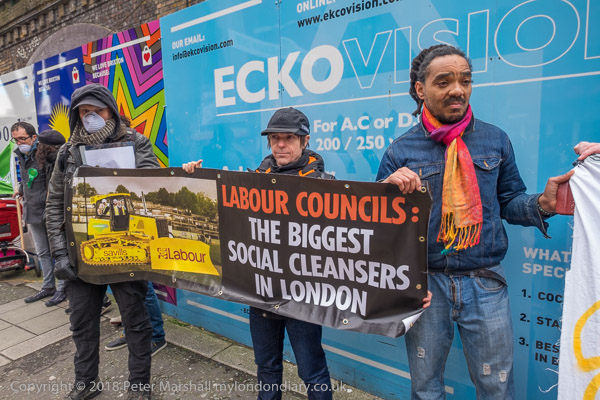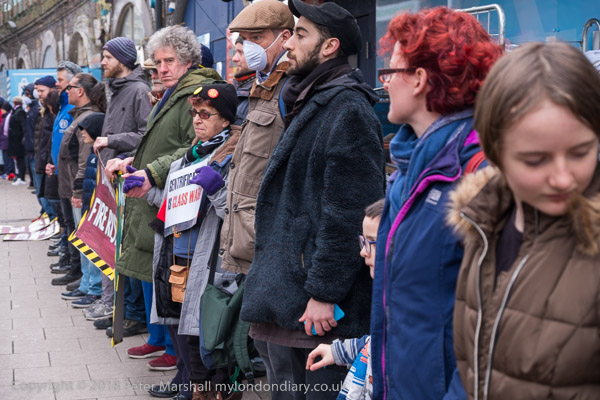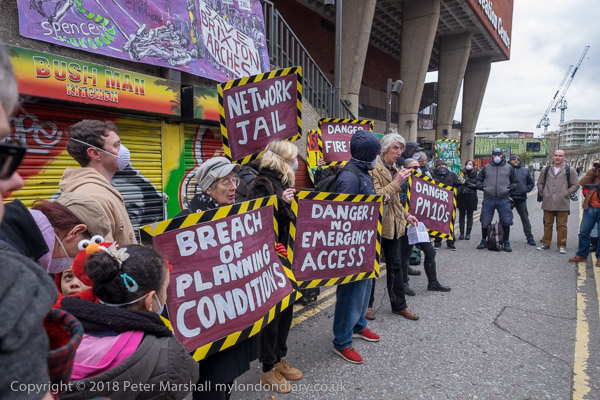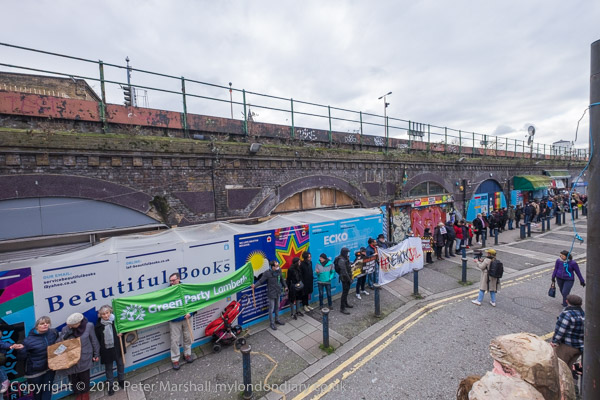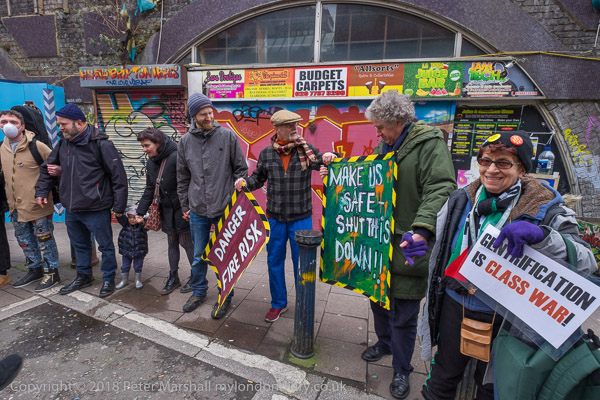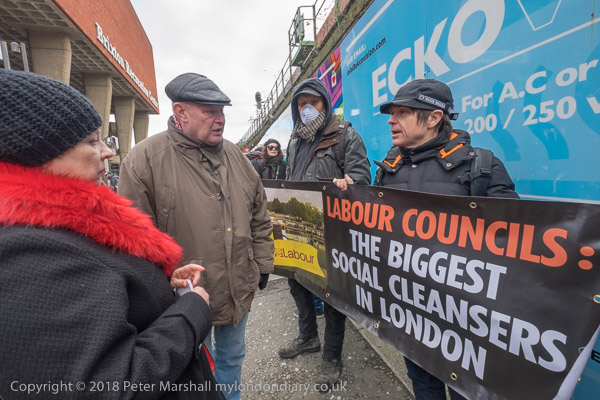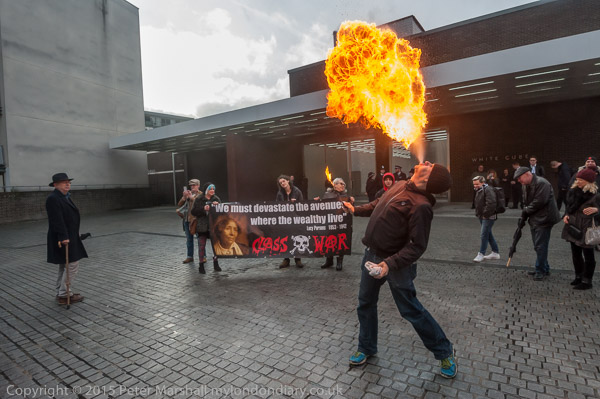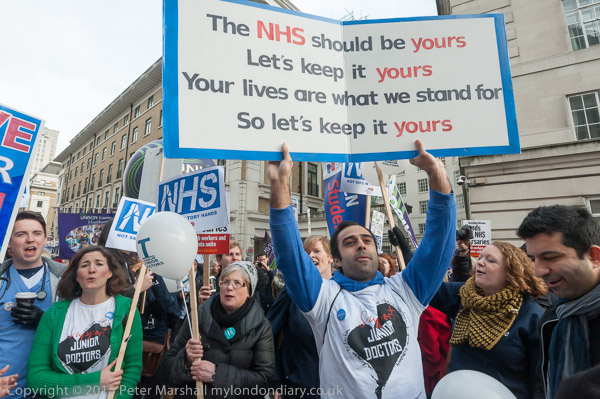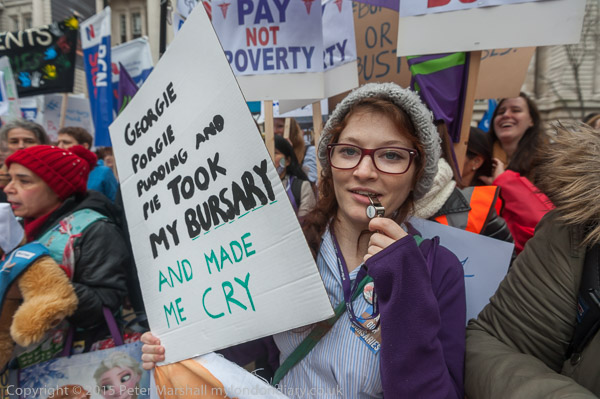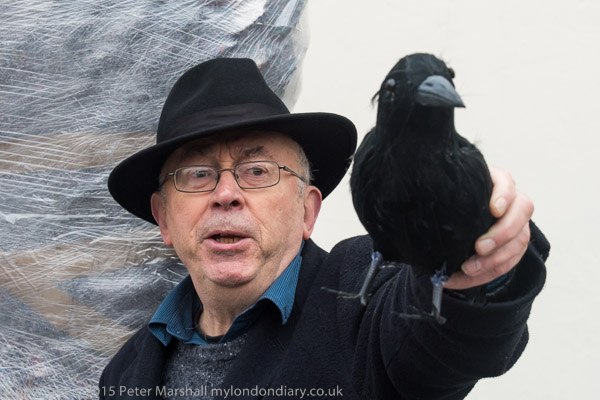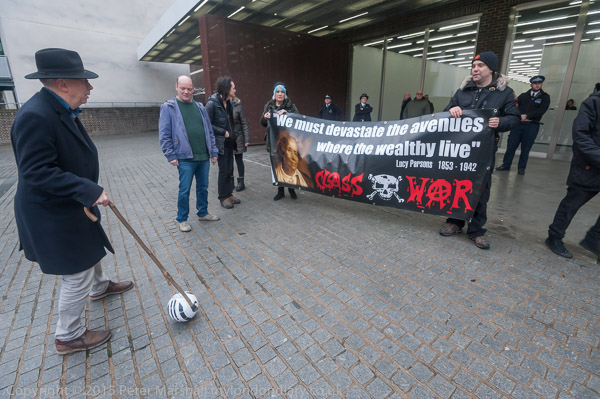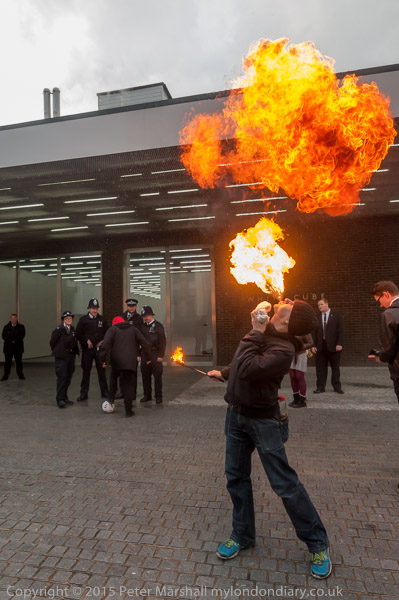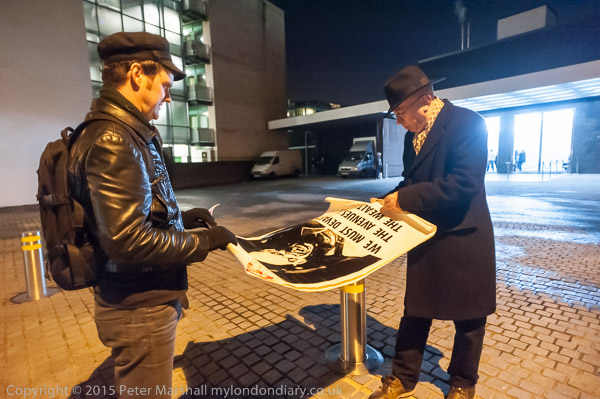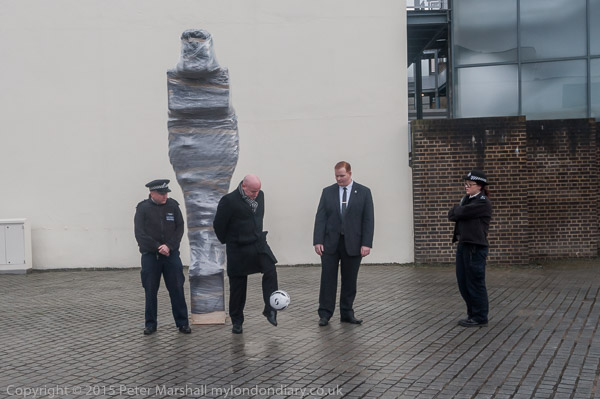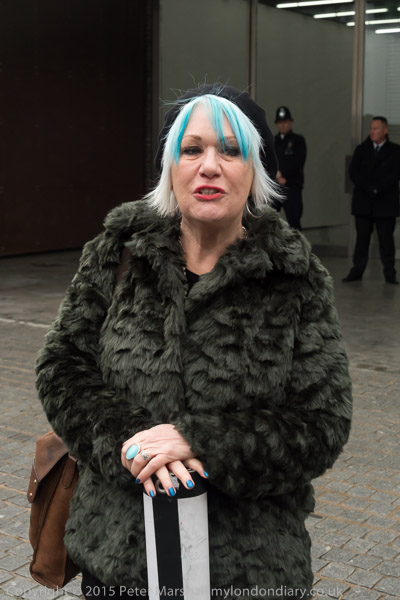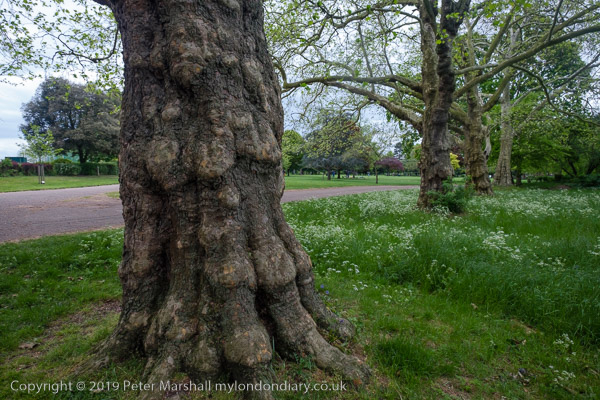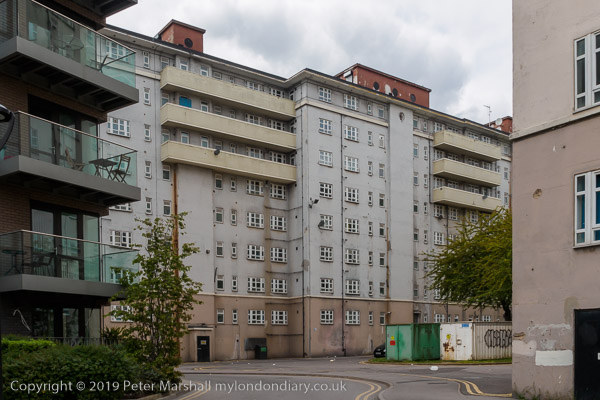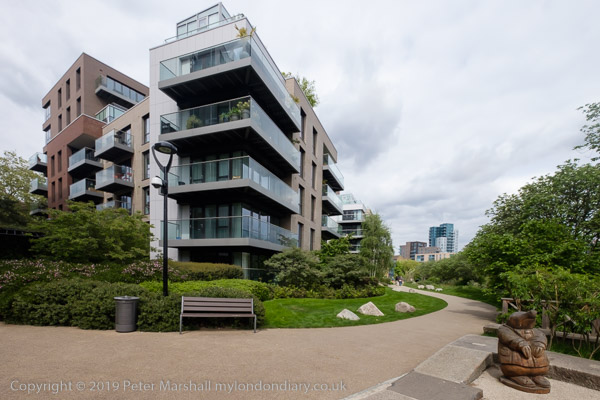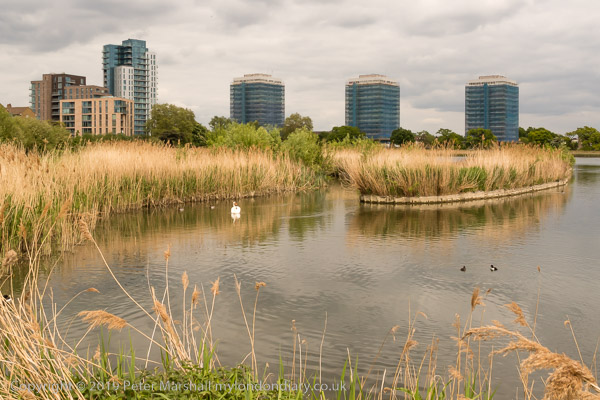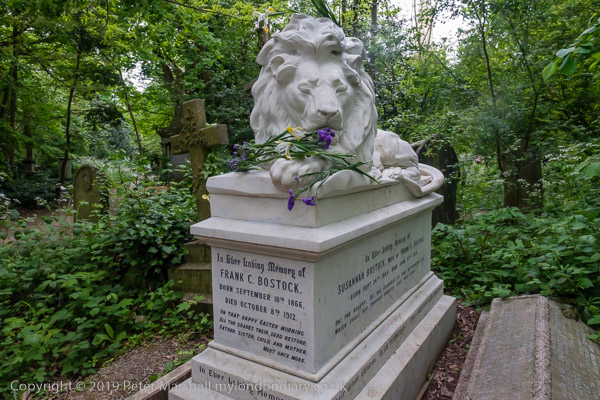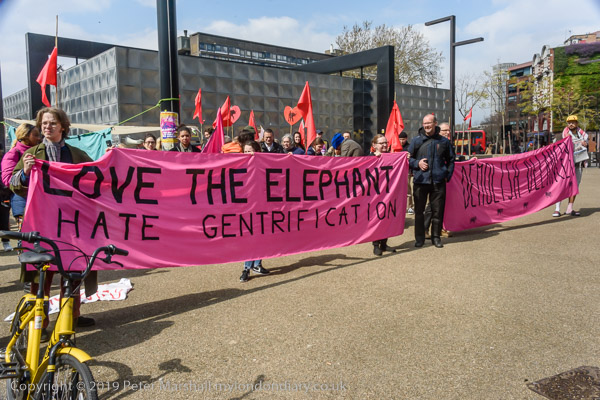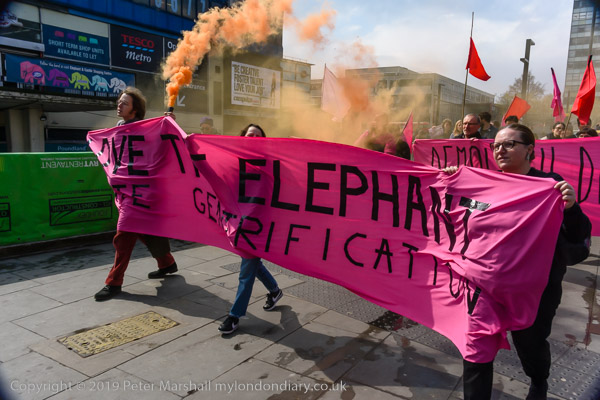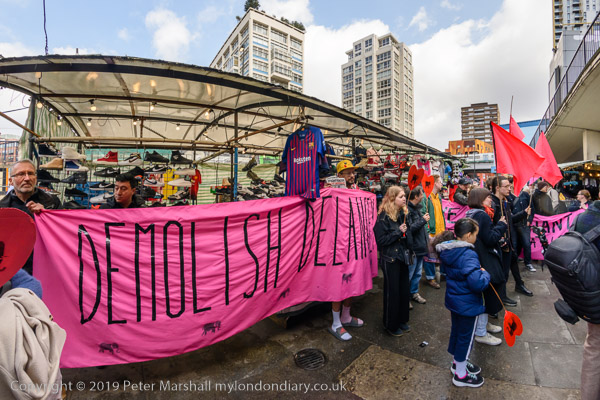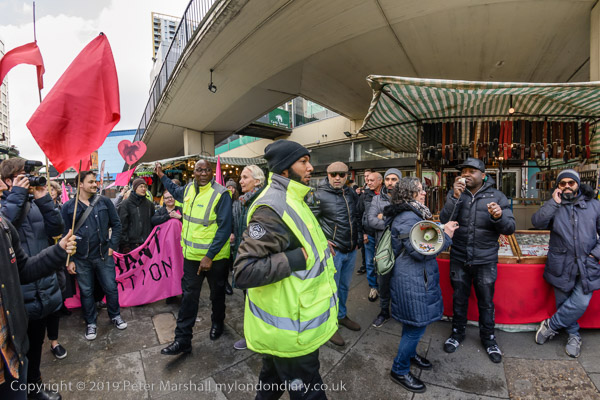Last Friday I went to the first day of the Fight4Aylesbury exhibition which continues until 23 April 2023. It’s an unusual exhibition and one that is worth visiting if you can get to south London before it ends,
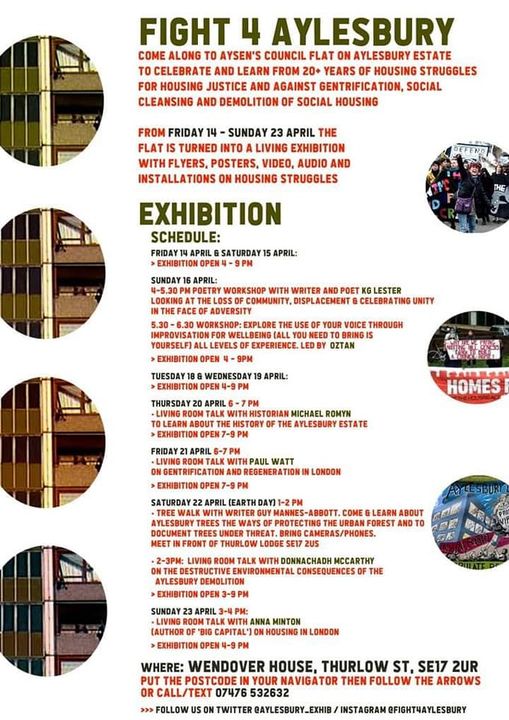
The exibition celebrates the struggle by residents on the Aylesbury Estate in Southwark to stay in their homes since the estate was first threatened in 1999 and takes over the flat of one of those still remaining, Aysen who writes:
Welcome to my home.
I am opening the doors to my flat for a collective clelbration of 20+ years of housing struggles to defend our council homes against social cleansing and gentrification. Our fight is ongoing.
Since 1999 the council has subjected us with privitisation, “re-generation” and now demolition. We, Aylesbury residents, other council tenant all over the country, and our supporters, have been resisting and are still resisting and defending our homes.
My home tells the story of this struggle.
Aysen
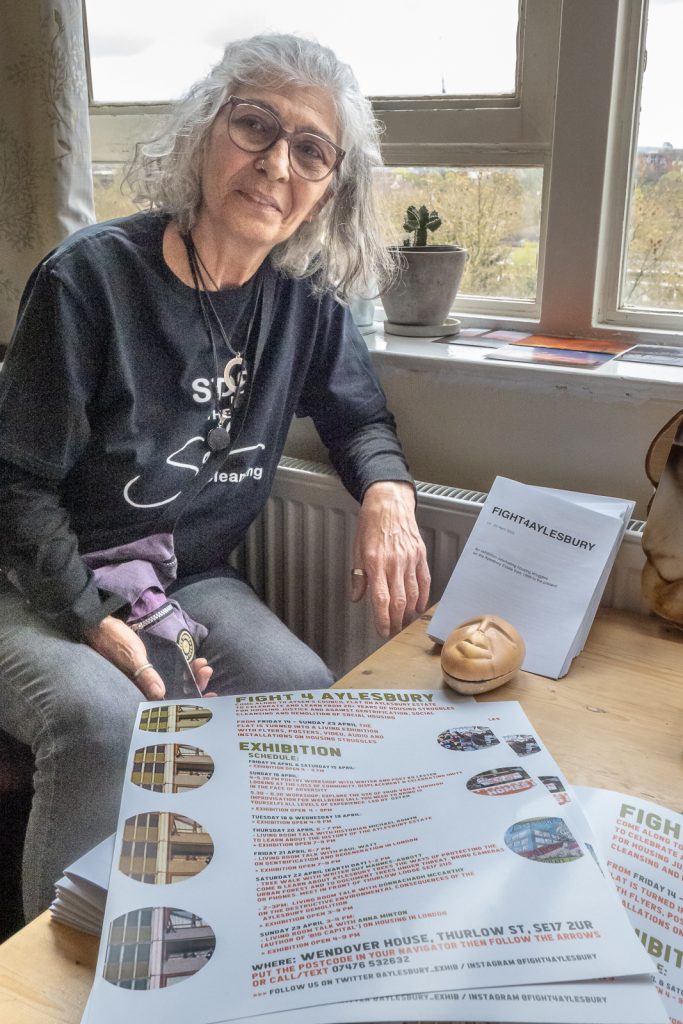
You are invited to Aysen’s council flat on Aylesbury Estate to celebrate 20+ years of housing struggles for housing justice and against gentrification, social cleansing and demolition of social housing. The flat has been transformed into a living exhibition with flyers, posters, video, audio and installations on housing struggles.
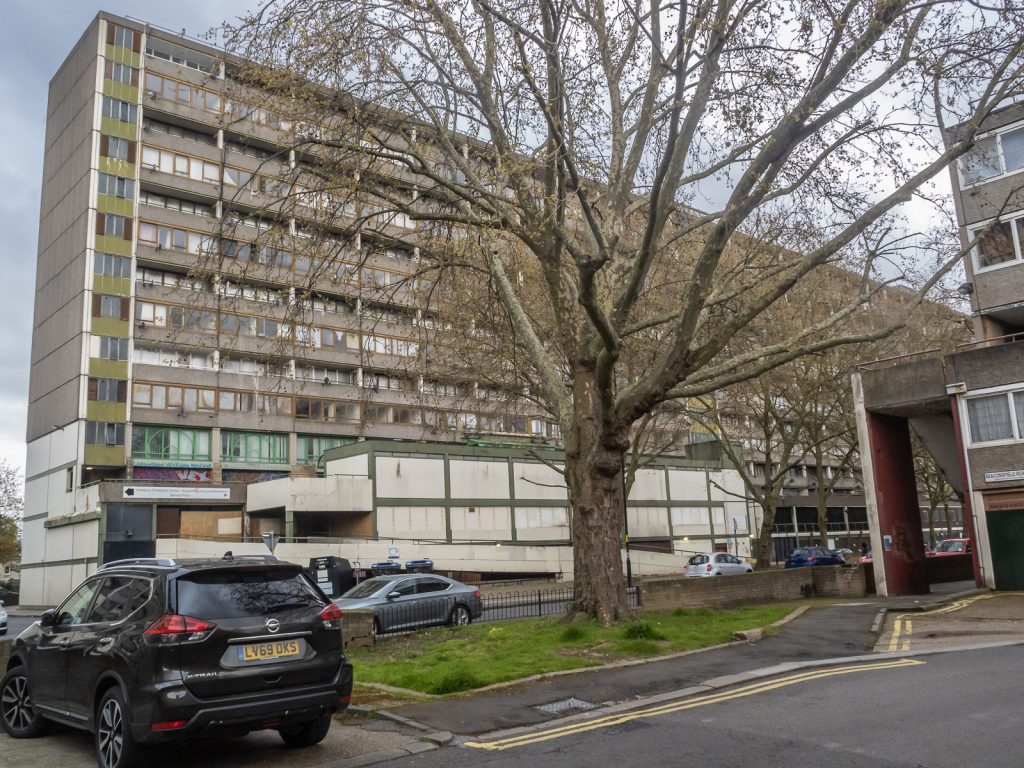
The Aylesbury estate, designed by Hans Peter “Felix” Trenton was one of the largest areas of council housing in Europe, built from 1963 to 1977 with 2,700 dwellings for around 10,000 residents in an area containing some earlier social housing a short distance south of the Elephant and Castle between East Street market and Burgess Park.
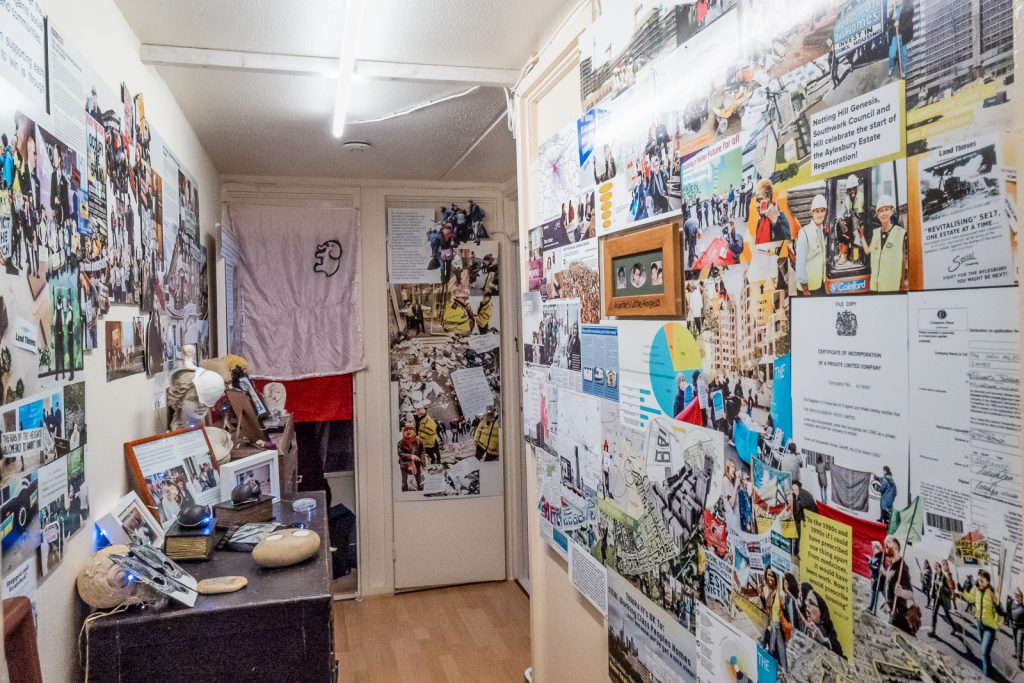
There are a number of large blocks of various heights, from 4 to 14 floors, all well designed and built to the high standards of the era, with rather larger rooms and more solid walls than current buildings. The estate also had a central boiler to supply heat more economically to the flats.
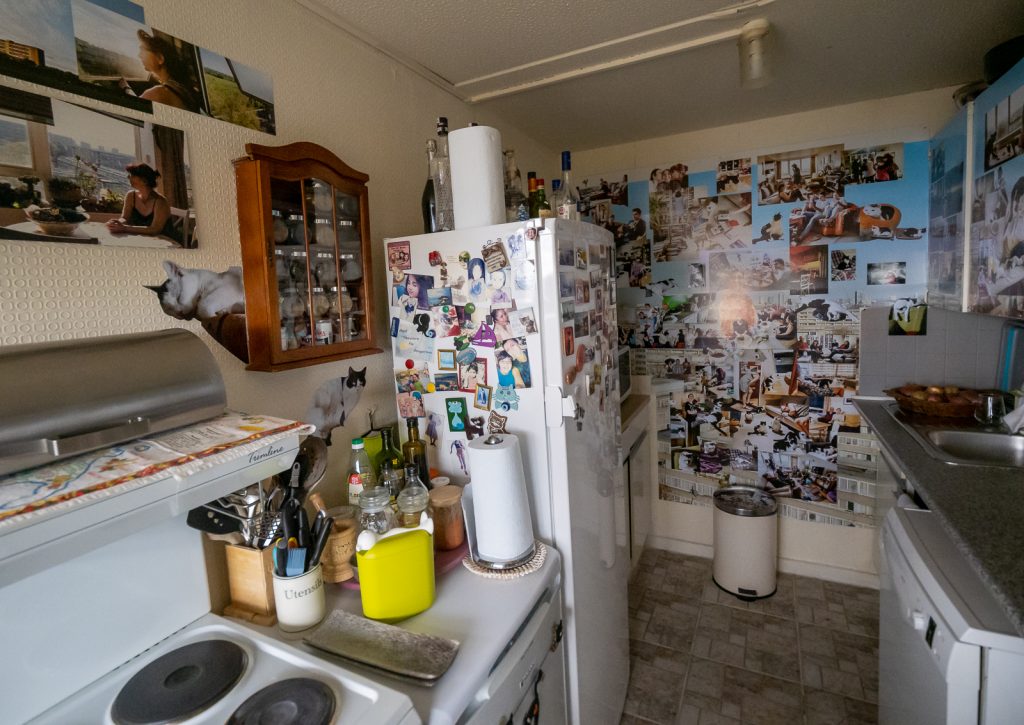
Southwark neglected the estate in the 1980s and 1990s, failing to carry out necessary maintenance and the estate and the estate environment became in poor conditions. The heating system in particular suffered. Southwark began to use this and the neighbouring Heygate Estate as ‘sink estates’, deliberately moving in families with various social problems and people with mental health issues. It was because the estate had become unpopular that Aysen, who had to leave Turkey after the 1980 coup, was able to get a flat here with her sister in 1993.
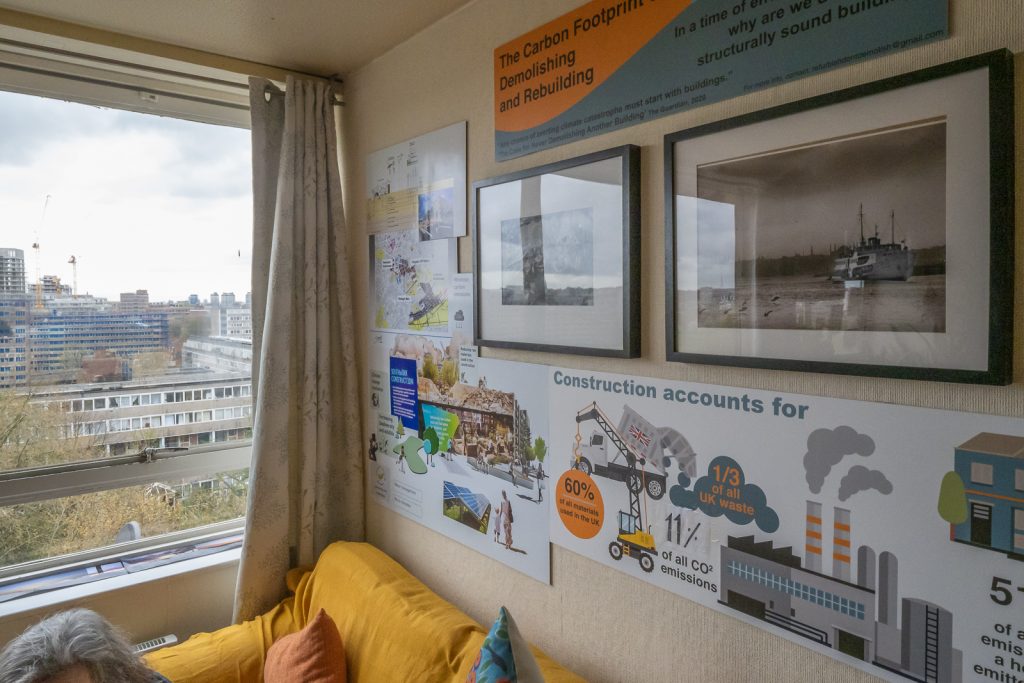
The estate came to get a reputation as “one of the most notorious estates in the United Kingdom“, reinforced by it becoming a popular area for TV crews filming “murder scenes, gun and drug storylines and gang-related crimes in soaps and gritty dramas.” In particular from 2004-15 Channel 4 used it in an “ident” for which they had added “washing lines, shopping trolley, rubbish bags and satellite dishes” to create what was described as “a desolate concrete dystopia.”
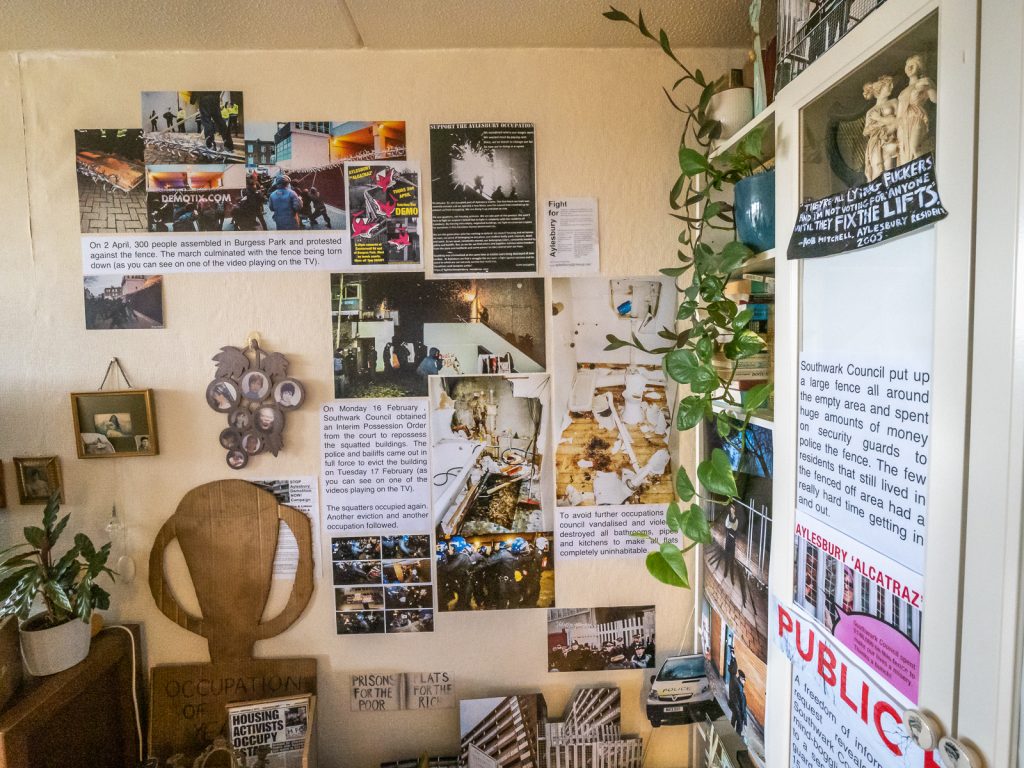
Its poor reputation led Tony Blair to hold his first speech to the press as Prime Minister in 1997 on the estate, promising that the government would care for the poorest in society. It was a promise that he and later prime ministers have spectacularly failed to keep.
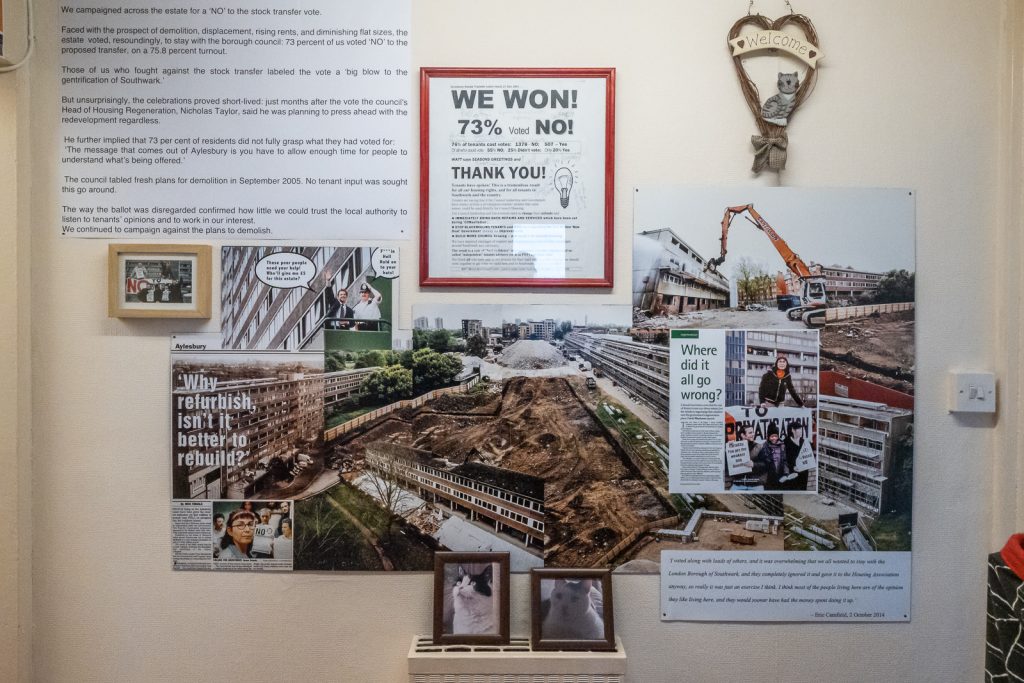
Southwark Council’s response to the estate’s decay they had overseen was to try and wash their hands of it by trying to transfer it to a private housing association to be redeveloped. But a campaign by residents in 2001 led to this being soundly rejected – not surprisingly they voted against demolition, displacement, rising rents and smaller flat sizes.
Undeterred, Southwark decided to go ahead with the redevelopment themselves, producing new plans for demolition in 2005. This time they didn’t bother to ballot the residents.
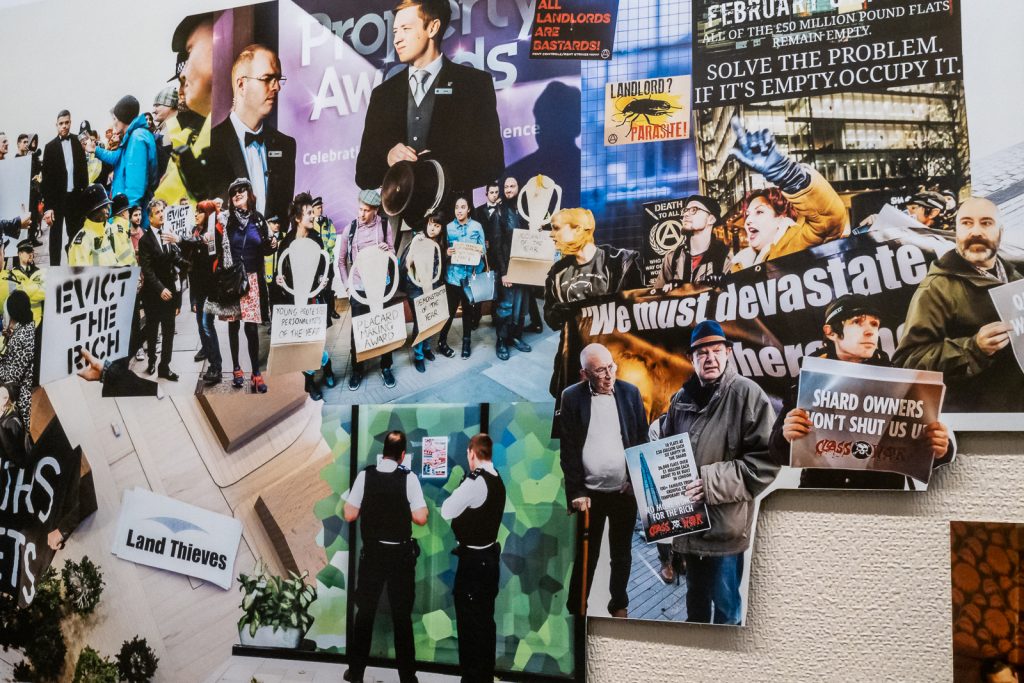
The plans were for a 20 year phased demolition, with rebuilding of modern blocks by a housing association. The generous public space of the estate would be reduced and the housing density almost doubled. The first phase was completed in 2013 and Phase 2 is currently underway. All four phases are due for completion around 2032, and the 12 storey Wendover block in which the exhibition is being held has already been largely emptied of residents and is expected to be demolished around the end of this year.
Residents have continued their fight to stop the redevelopment, with protests and in January 2015 housing activists and squatters occupied flats in one of the emptied blocks. Moving from block to block they were finally evicted 18 days later. The squatters occupied another building and again were evicted. Southwark spent £140,000 on a fence, completely destroyed all bathrooms, toilets, pipes and kitchens in empty properties and spent £705,000 on security guards to prevent further occupation.
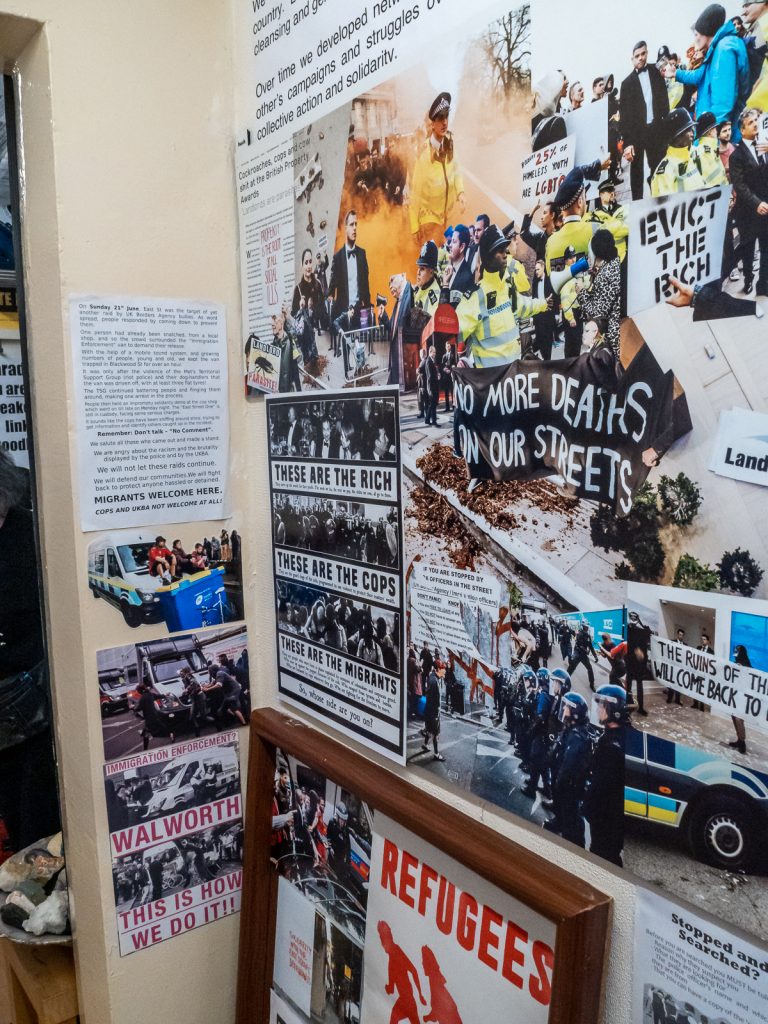
Other protests took place, including one in which part of the fence was torn down, and various protests at council meetings. Aylesbury residents also joined with housing activists in Southwark and across London at various other protests. But although these brought the Aylesbury campaign and the scandals over housing to national attention, the demolition continues.
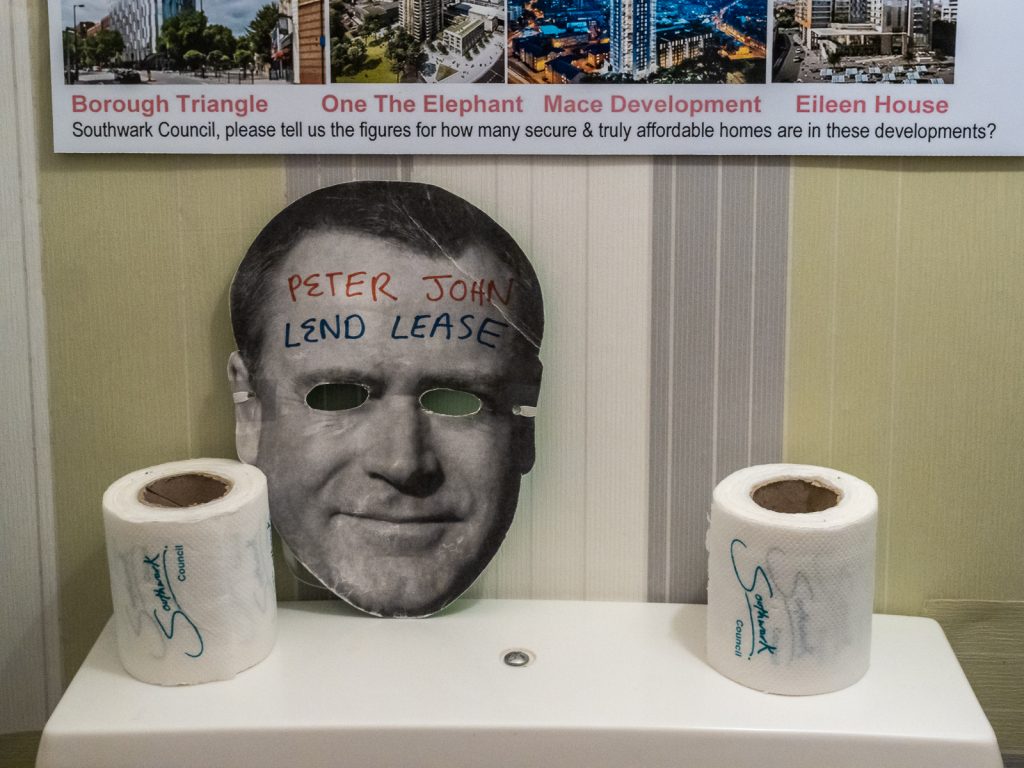
Part of the scandal has been the “well-oiled revolving door” between the council – councillors and officers – and developers. The toilet in the exhibition flat is devoted to Southwark Council, and in particular for its Leader for more than a decade Peter John, who stepped down in 2020. He described his years as a “decade of Delivery“; community; anti-gentrification collective Southwark Notes call it “a Wild West gold rush for developers.” A 2013 report showed that “20 percent of Southwark’s 63 councillors work as lobbyists” for developers in the planning industry.
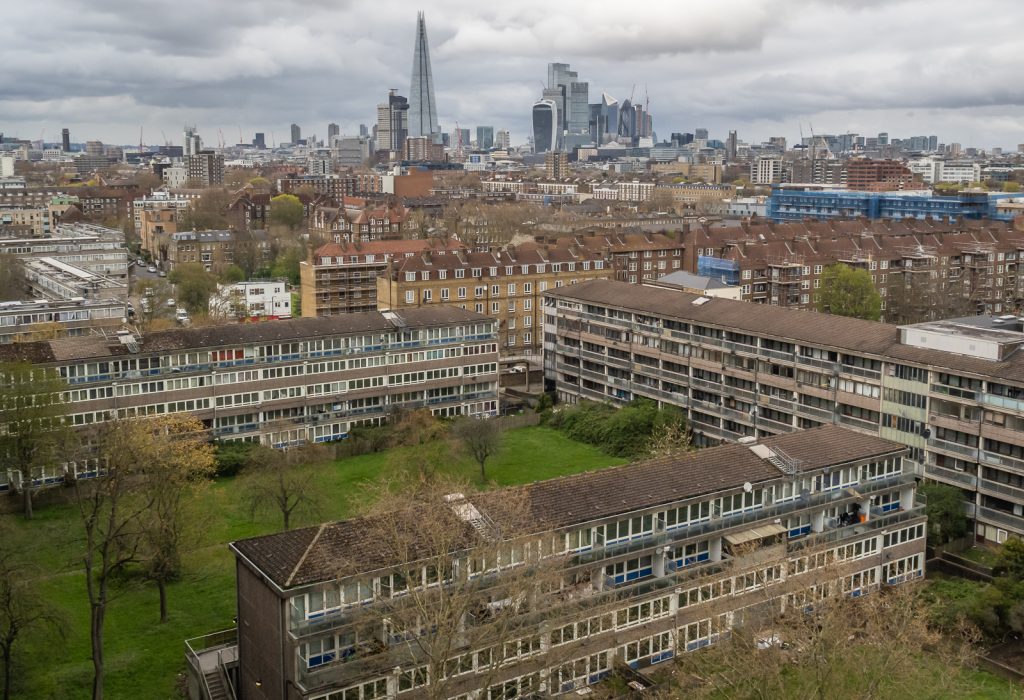
Similar estates built with the same system elsewhere have been successfully refurbished at relatively low cost to bring insulation and other aspects up to current standards. These buildings will probably last into the next century and their demolition is expensive and incredibly wasteful of both the huge amount of energy that was embedded in them and and energy require to demolish and rebuild.
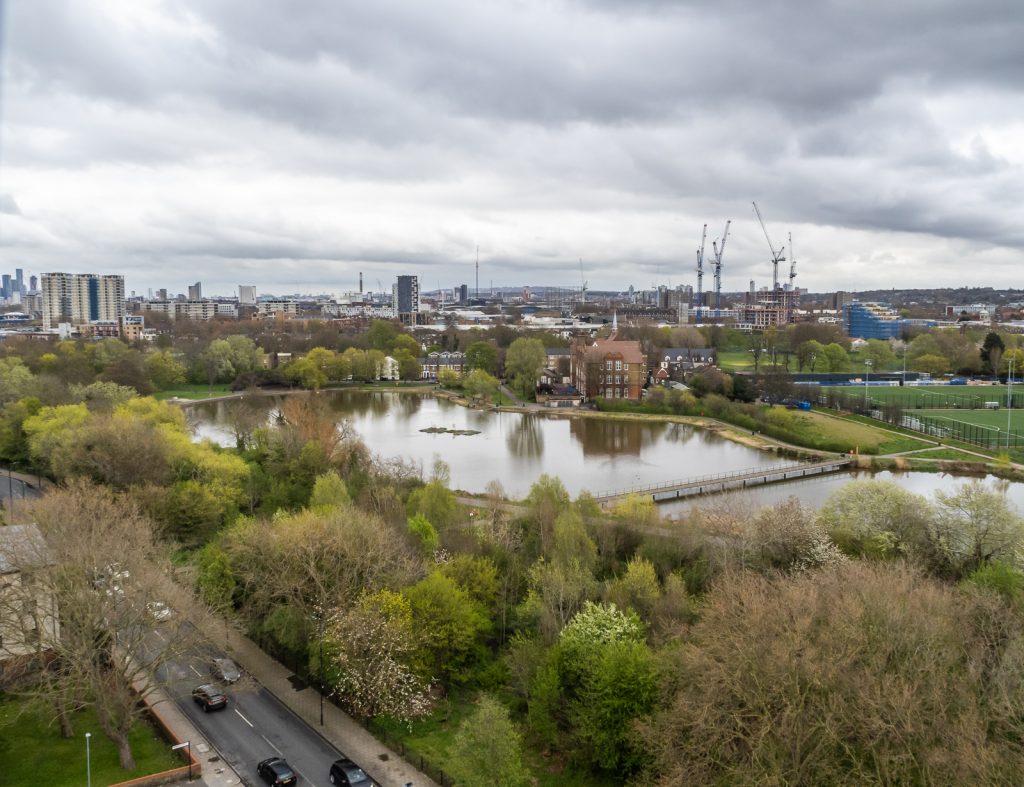
There is more to the exhibition – and you can see some hints of it in the pictures. After visiting the show I walked up four floors to the top of Wendover for the view. The windows were rather dirty and most fixed shut but I did find a few places where they were open slightly to let me take photographs of the views across London.
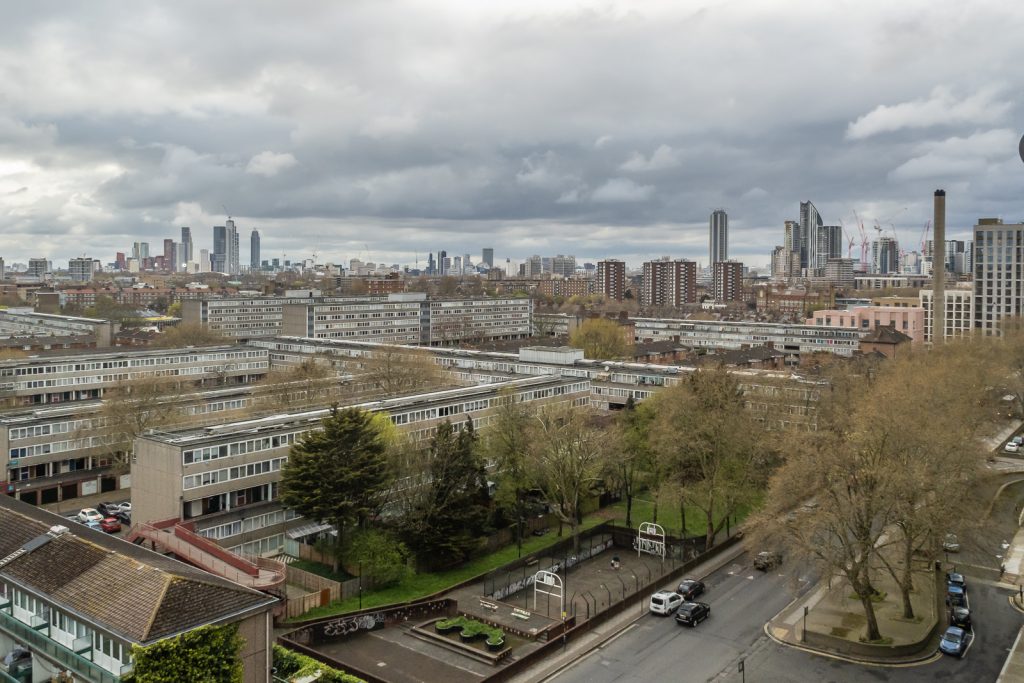
You can see a different set of pictures in my album Fight4Aylesbury Exhibition.
